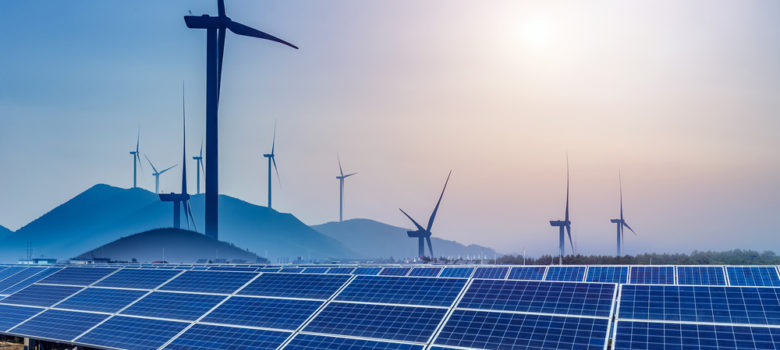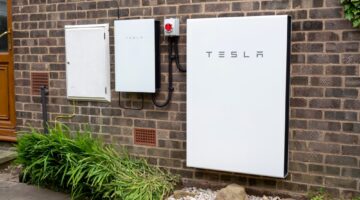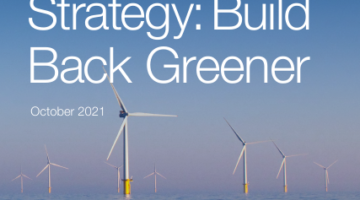
Last year around a third UK energy was generated by renewable energy sources. It’s a huge achievement and the percentage of renewable is only growing.
We all want more renewable energy and less reliance on fossil fuels, but how does our renewable energy actually work? What is it made up of?
Wind – 18%
Wind power is, in many ways, the bedrock of UK renewable power. We have one of the best locations in the world for it, which is why we’re in the top 5 countries in the world for generating wind power (the others might surprise you – China, the USA, Germany & India). With further big wind projects moving forward, we don’t seem to be slowing down any time soon.
In 2018, 18% of our total energy consumption came from wind farms, which is pretty impressive feat. The first quarter of 2019 has seen it grow even higher, to over 21%. We currently have just under 10,000 turbines, with a total capacity of 21.4GW, but the government is continuing to put more money behind wind power. At current, about 60% of our wind power comes from offshore wind farms, which are a lot more expensive to build but provide a lot more power without taking up land space. The East Anglia One project, which is currently under construction in the North Sea, will see this percentage grow significantly as wind continues to be at the forefront of UK renewable energy.
Bioenergy – 9%
Bet you thought solar power would be next, eh? But no, in 2018 we produced 2-3 times as much energy from bioenergy than from solar panels.
Bioenergy is a bit of a blanket term that essentially covers any gas, electricity or transport fuel generated from organic matter. That means plants, timber, agricultural & food waste, and even sewage. Nice. This variation makes it hard to make generalisations about bioenergy, but it’s still a big part of our energy mix.

The really big advantage of bioenergy is that it is a lot more flexible than most renewable energies.
Despite these controversies, biomass is on the rise. The UK government is keen to expand it and the Committee on Climate Change certainly agrees, with projections of bioenergy providing up to 15% of the UK’s primary energy by 2050.
Solar Power – 4%
Solar power has long been one of the big hitters in the renewables world, at least partly because it does so well in global technology hotspots like California and China. In terms of our reliance on solar panels, it’s low compared wind and bioenergy, sitting just below 4% in 2018, but we’re certainly no slouch – we are still in the top 10 global producers of solar energy.
The problem with solar in the UK, as you may have guessed, is that we just don’t have enough sunny days. That means a low generating capacity, and that building solar panels on a large scale means spending a lot of money for very unreliable generating capacity. At the moment, our biggest solar farm is Shotwick in North Wales, which has a generation capacity of 72.2 MW.
Where UK solar really shines, though, is on our domestic properties. We currently have around 1.5 million homes with solar panels, thanks to schemes like the Feed-in Tariff, and dramatically falling costs. If you ask us, this is where the future of UK solar lies – with smallscale microgeneration linked up to a smarter grid system.
Hydroelectric – 1.6%
Hydroelectric energy is, in it’s simplest form, uses flowing water to spin a turbine, generating electricity. Simple, right? It’s also super efficient, rarely rating below 80% efficiency. That’s about double the efficiency of a steam turbine. While we have limited resources for it here, it is the global leader in renewable energy, making up around 17% of the world’s total electricity generation.
There are a few different types of hydroelectric power generators. Run-of-river schemes use the natural flow of a river – think weirs and old-timey waterwheels. Storage schemes use a dam to impound the water in a reservoir that can then feed the turbines – this allows the energy generation to be more controlled. Tidal and offshore use the natural movement of the tides to move the turbines. The Swansea Tidal Lagoon was an example of this and set to be a world first, potentially generating enough power for 155,000 homes, however progress on the project has been slow as ministers rejected it on a cost basis.
Pumped storage is a little different, because it doesn’t generate power but store it. It consists of two reservoirs, one at a significantly higher altitude than the other. At times of high energy generation, when the national grid is full of energy that people aren’t using (imagine a very windy night, with all the turbines going crazy), we use that electricity to pump water from the lower reservoir to the higher ones. When demand peaks and we require more electricity, the water is released down to the lower reservoir, flowing through the turbines as they do. In 2018 we stored around 0.27% of our energy this way. Not a lot, but enough to make a difference.
Currently our biggest hydroelectric asset in the UK is Dinorwig Power Station in North Wales. There’s another interesting scheme called Red John which is planned at Loch Ness; this would be a huge addition to our pumped-storage network, however it is still very much in planning stages.
If the government is serious about increasing our renewable energy from intermittent sources like wind, more energy storage options like this may have to be considered to offset the fluctuating generation.
We decided not to include nuclear power on this list, but that provided around 18% of our power last year. Whether we count it as a “renewable” or not is debatable – you can read more about nuclear here.
While the future of UK energy is uncertain, it’s unarguable that renewables are increasing their share of our energy generation. What we need now is a much more concise and well thought out roadmap for how we handle the challenges that intermittent energy sources create.
Think we missed something? Do you have a different opinion?
Comment below to get your voice heard…












Does bioenergy include of all the anaerobic digestion energy we generate here?